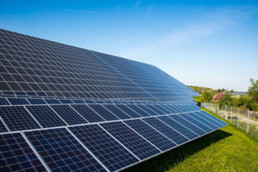Illumination Can Fix Flaws in Solar Cells
Solar cells have been around for decades but still seem to run into efficiency problems. To compensate, scientists have been experimenting with a new material to put in them, such as perovskite. Perovskites are compounds that can be molded into small films with many possible applications, including solar cells. At the moment, however, technical limitations prevent them from filling their potential and can cause discrepancies on the same films.
A team of scientists from US and UK universities have recently found a method to make perovskites work more efficiently. Small flaws in their make-up can prevent them from converting light into electricity in solar cells. Samuel Stranks, a scientist at MIT who was a part of the team, was quoted in the MIT News talking about a possible solution: “There are some defects that can be healed under light.”
Researchers discovered that when iodide ions (special atoms with no electrons that can hold an electric charge) are placed under strong lighting, they move away from the lit area. As they move along, they sweep the defects away. Although this ion movement is not new, this is the first time intense light has been shown to cause it.
Past research on eliminating defects in perovskites has concentrated on electrical and/or chemical work. This current illumination treatment, though, has several advantages over them. For one, it allows researchers to simultaneously “fix” the film while also using the light as a probe to help understand perovskites better. It also simplifies the process greatly: to apply the treatment, all you have to do is flip a light switch. Stranks has called this process, entitled photo-induce cleaning, “a way forward” to creating technology with perovskites.
Over time, however, the effects of the lighting lessen and it remains to be seen how researchers can prolong this process enough so that these devices can be commercially viable. Although it might take several years to discover enough about this material to make its use in solar cells practical, this is an important step forward.
How can researchers make sure their lights are properly calibrated for perovskites? Konica Minolta Sensing Americas has the answer. The LS-150 and LS-160 Luminance Meters are portable, precise, and can measure extremely small areas. With numerous other light and display measurement products, any scientist studying intense illumination can rest assured their lights are working smoothly with Konica Minolta Light Meters.










